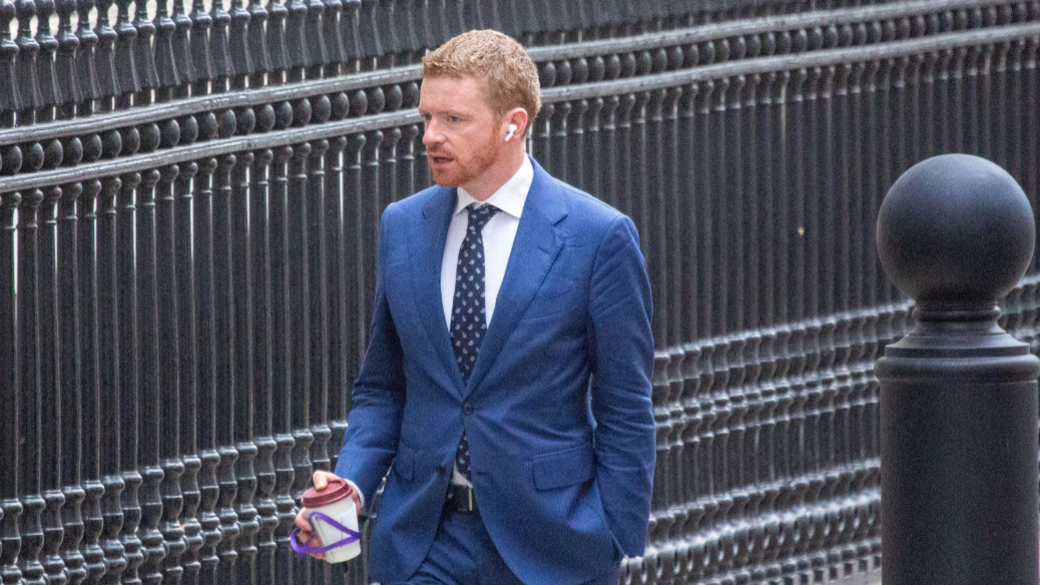How will Starmer's new-look Downing Street work?

- Published
Sue Gray's departure as Sir Keir Starmer's chief of staff has forced an early overhaul of his Downing Street operation.
It is not the first time a prime minister has changed the way the centre of government operates.
But the revamp, coming just three months after entering office, could define how Sir Keir now plans to wield power.
Sue Gray quits as Sir Keir Starmer's chief of staff
- Published7 October 2024
Why it was likely Sue Gray would go
- Published6 October 2024
Ms Gray's replacement as chief of staff is Morgan McSweeney, a key Starmer aide credited with masterminding Labour's election victory in July.
Unlike Ms Gray, a long-standing civil servant who joined Sir Keir's top team last year, he has been involved in Labour politics since the Blair era.
Formerly head of political strategy at No 10, his appointment has been seen as an attempt to give the operation a sharper political edge following the party's rocky return to power for the first time in 14 years.
Although he already had considerable influence over policy, his new role will give him greater responsibility for driving the government machine to make sure they actually happen.

Morgan McSweeney ran Starmer's Labour leadership bid in 2020
Appointed directly by Sir Keir, Mr McSweeney will become the most senior special adviser (or "spad") working in Downing Street, in charge of the political arm of the prime minister's team.
Unlike Ms Gray, he will have two deputy chiefs of staff, Vidhya Alakeson and Jill Cuthbertson, promoted from within No 10.
Former journalist James Lyons has been brought in to lead a new "strategic communications" team, reporting to Sir Keir's longstanding director of communications Matthew Doyle.
He is expected to play a key role in devising the "grid" of planned government announcements - an area that had, unusually, been under the command of Ms Gray.
But change is also afoot in the civil service arm of the organisation, whose occupants are not political appointees but have to work closely with them.
It has been announced that Nin Pandit, director of the No 10 policy unit since late 2022, will become Sir Keir's principal private secretary (PPS).
One of the so-called "golden triangle" of senior civil service roles alongside the cabinet secretary and the monarch's private secretary, she will provide a key link with other departments, as well as the Palace.
This important position, the most senior within Sir Keir's private office, has been unfilled since the departure of previous occupant Elizabeth Perelman, amid reports of tensions over who should replace her.
'Bad job title'
Gavin Barwell, who was Theresa May's chief of staff, said he and May's PPS were together responsible for "running the building" and keeping No 10 on track.
Although a Blair-era change allowing spads to direct civil servants was reversed under Gordon Brown, the chief of staff's closeness to the prime minister means the holder of the role remains hugely powerful.
But the structure has been blamed for a lack of accountability.
Dominic Cummings, who was Boris Johnson's top adviser but never took the chief of staff title, once called it a "bad job title" imported from the US, which does not reflect the realities of how power is wielded in Westminster.
In his evidence to the Covid inquiry, external, he said he was not in charge of officials in No 10, and lacked the ability to hire and fire them.
The relationship between Mr McSweeney and Ms Pandit will now be crucial to Starmer's No 10, and fills a crucial gap at the top of the team.
But it could be some time before the full effect of this week's changes materialises.
This is partially because Simon Case, the cabinet secretary and overall boss of the civil service, a key figure in No 10, is about to step down after four years in the job.
Mr Case will be replaced by the end of the year, with the recruitment process for the £200,000 role under way.
'Fragmented and complicated'
The Downing Street operation has grown since the Thatcher era, with a significant rise in the number of politically-appointed roles under Tony Blair.
It is also a more fragmented organisation, with more recent teams such as one devoted to data science, created under Johnson, sitting alongside more longstanding ones, such as the policy unit and the press office.
It was a point made, ironically, by Ms Gray herself in her fateful 2022 report into the Partygate scandal into lockdown Covid parties in government buildings.
She wrote, external that the leadership structures were "fragmented and complicated and this has sometimes led to the blurring of lines of accountability".
"Too much responsibility and expectation is placed on the senior official whose principal function is the direct support of the prime minister," she added.
How her replacement tries to shape those structures will now be crucial, as the new Labour government tries to find its feet.